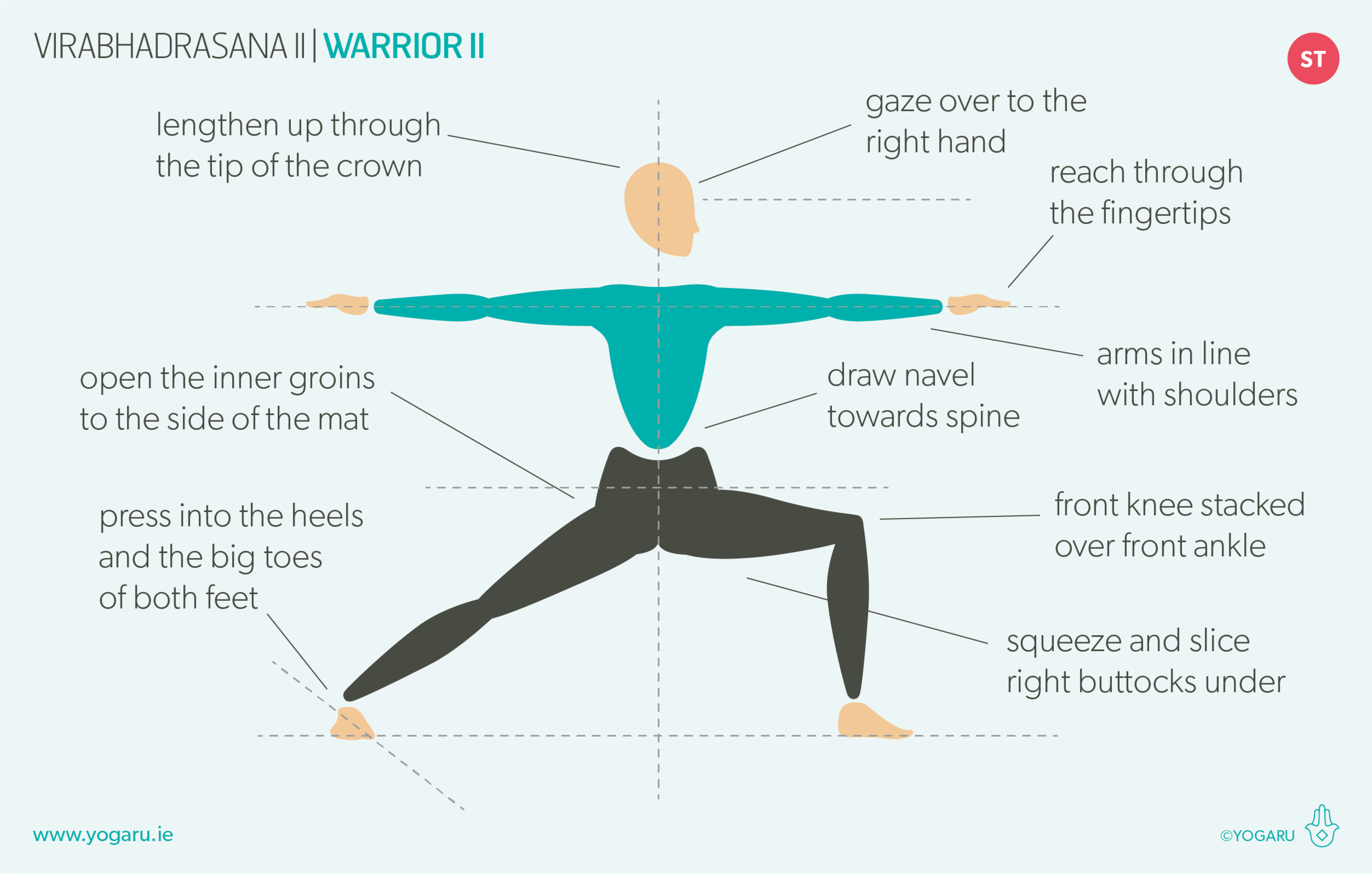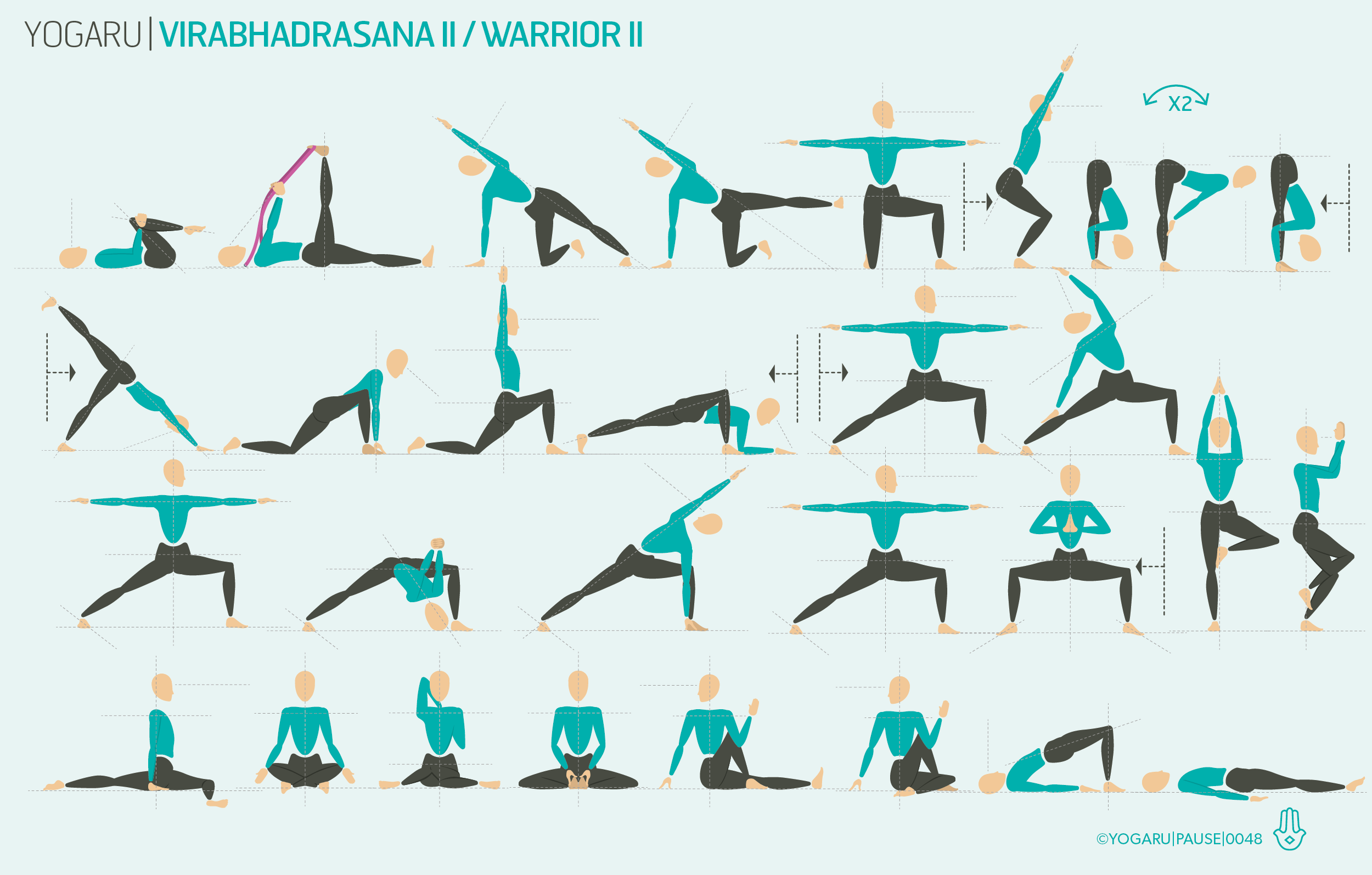EXPLORING VIRABHADRASANA II/WARRIOR II IN YOUR PRACTICE
Hip opening classes are one of the most requested and popular class themes. They release tension physically and mentally, and leave you feeling a lovely freedom of movement in the hip joint as you leave your class. When you consider a hip opening class, which asana springs to mind? Most people think of asana that stretch the outer hip muscles, for example Gomukhasana /Cow Face or Eka Pada Rajakapotasana/Pigeon Pose. For me, I feel a deeper hip opening in asana where the leg is rotated outwards, strengthening the outer hip and stretching the inner leg. Warrior II is not traditionally considered a hip opener, but there is a deep opening of the inner groin in the front leg in particular, as the outer glute is working hard to keep the inner knee from collapsing in. Asana with similar leg arrangement such as Parsvakonasana/Side Angle, Trikonasana/Triangle & Ardha Chandrasana/Half Moon will externally rotate the leg, and open the hip, in a similar way.
The hip joint is made up of several families of muscles – the hamstrings, the glutes, the quads, the groin and the hip flexors. Warrior II works all five muscle groups. Below are some alignment cues to try out in the sequence above or in your next class. As you test out some of the tips bring your attention to the muscles you are strengthening and stretching.
ALIGNMENT CUES
The above sequence starts with Supta Padangusthasana/Reclined Hand to Big Toe to warm up and lengthen the hamstrings. After you have pressed the leg up straight, hinge the leg out to the side from the hip joint to start to open up the groin. There is also a half Warrior II kneeling version to help you find the outward rotation of the hip without the full weight of the body.
Print out the below tips, along with the sequence, and take some extra time in your Warrior II:
With your hips facing the side of the mat your left hip will naturally sits slightly forward of your right hip.
Squeeze your right outer hip muscles and press lightly into you big toe mound to track your knee over your ankle and open the groin out to the side of the mat.
Press into your front heel and pull it back towards you to feel the quads and hamstrings wake up.
As your groin starts to open see can you find more space to drop your hips down, making sure to adjust your front foot to keep the knee tracking.
Draw your navel in towards your spine and lengthen up through the tip of the crown, shoulders directly over pelvis.
With equal weight between front and back foot, press into your back heel to feel the arches of the foot lift.
To save the images for personal use click and hold down the image until the ‘save image’ option appears; on Mac hold down ‘control’ and click the image to get the option box; on PC right click on the image to get the option box. Scroll down in the ‘option box’ and click ‘save image’.
Ruth Delahunty Yogaru





